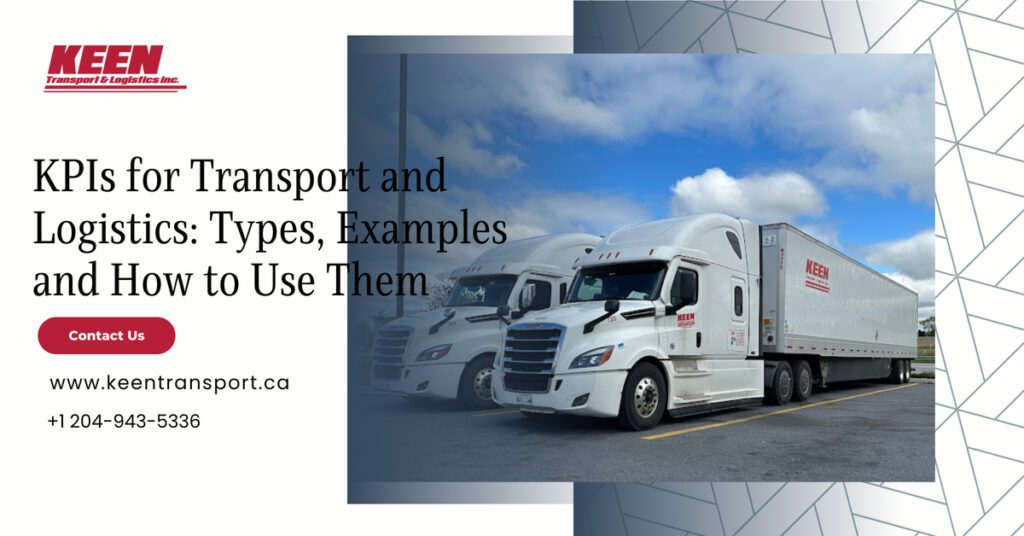In the fast-paced world of transport and logistics, key performance indicators (KPIs) play a crucial role in measuring and optimizing efficiency, productivity, and customer satisfaction. By understanding and implementing the right KPIs, businesses can streamline operations, reduce costs, and enhance service quality. This blog will explore the various types of KPIs for transport and logistics, provide examples, and offer insights on how to effectively utilize them.
What Are KPIs in Transport and Logistics?
KPIs are quantifiable metrics that help organizations assess their performance against specific goals. In transport and logistics, KPIs can measure everything from delivery times to inventory turnover rates. Choosing the right KPIs is essential for accurately evaluating the effectiveness of your operations.
Types of KPIs for Transport and Logistics
- Delivery Performance Metrics
- On-Time Delivery Rate: This KPI measures the percentage of shipments delivered on or before the scheduled delivery date. A higher on-time delivery rate indicates efficient transport and logistics operations.
- Average Delivery Time: This metric calculates the average time taken to deliver goods from the warehouse to the customer. Tracking this KPI helps identify bottlenecks in the delivery process.
- Cost Metrics
- Cost per Mile: This KPI helps businesses determine the total cost of transporting goods per mile. By analyzing this metric, organizations can identify areas to reduce transportation costs.
- Total Transportation Cost: This encompasses all expenses related to transportation, including fuel, labor, and maintenance. Monitoring this KPI allows companies to optimize their budgeting strategies.
- Inventory Metrics
- Inventory Turnover Ratio: This KPI measures how often inventory is sold and replaced over a period. A higher ratio indicates efficient inventory management within transport and logistics.
- Stockout Rate: This metric indicates the frequency of stockouts in a given period. A lower stockout rate is crucial for maintaining customer satisfaction and preventing lost sales.
- Customer Satisfaction Metrics
- Customer Satisfaction Score (CSAT): This KPI gauges customer satisfaction levels through surveys and feedback. High CSAT scores reflect successful transport and logistics operations that meet customer expectations.
- Net Promoter Score (NPS): NPS measures customer loyalty and the likelihood of customers recommending your services. Tracking this KPI can help organizations improve their service offerings.
Examples of Effective KPIs in Transport and Logistics
- On-Time Delivery Rate: Aim for an on-time delivery rate of 95% or higher.
- Cost per Mile: Monitor cost per mile regularly to keep transportation expenses within budget.
- Inventory Turnover Ratio: Target an inventory turnover ratio of 6 to 10, depending on your industry.
- Customer Satisfaction Score (CSAT): Strive for a CSAT score of 80% or higher.
How to Use KPIs Effectively
- Set Clear Goals: Define what you want to achieve with your transport and logistics KPIs. This will guide your selection of relevant metrics.
- Regular Monitoring: Consistently track and analyze your KPIs to identify trends and areas for improvement.
- Involve Your Team: Share KPI results with your team to encourage collaboration and accountability in achieving goals.
- Adjust Strategies: Use KPI insights to make informed decisions and adapt your strategies as needed to optimize performance.
Conclusion
In the realm of transport and logistics, KPIs are essential tools for measuring success and driving improvement. By understanding the various types of KPIs, using relevant examples, and implementing effective strategies, businesses can enhance their operations and deliver exceptional service. Whether you aim to improve delivery performance, reduce costs, or boost customer satisfaction, the right KPIs will provide the insights necessary to thrive in today’s competitive landscape.

